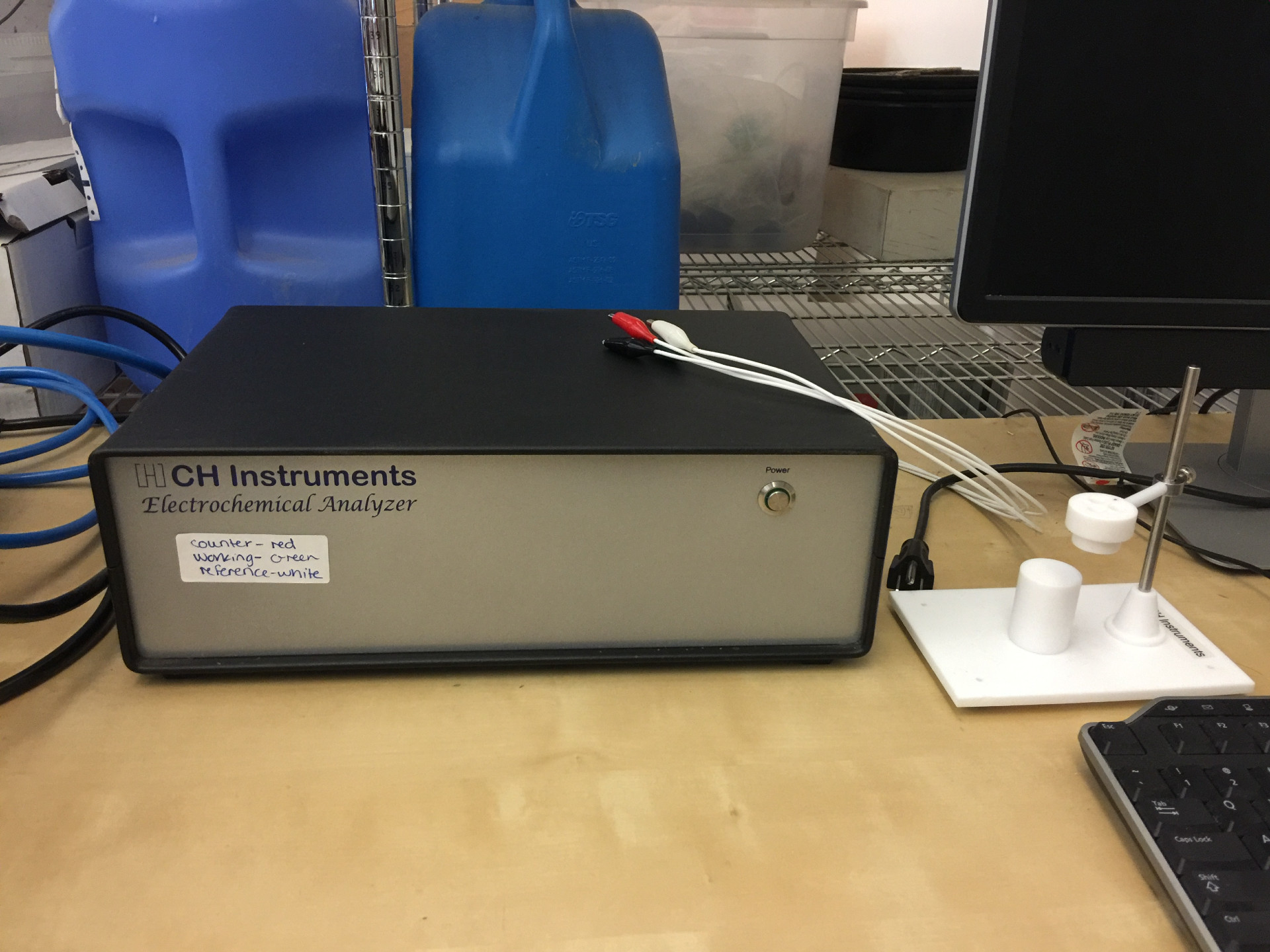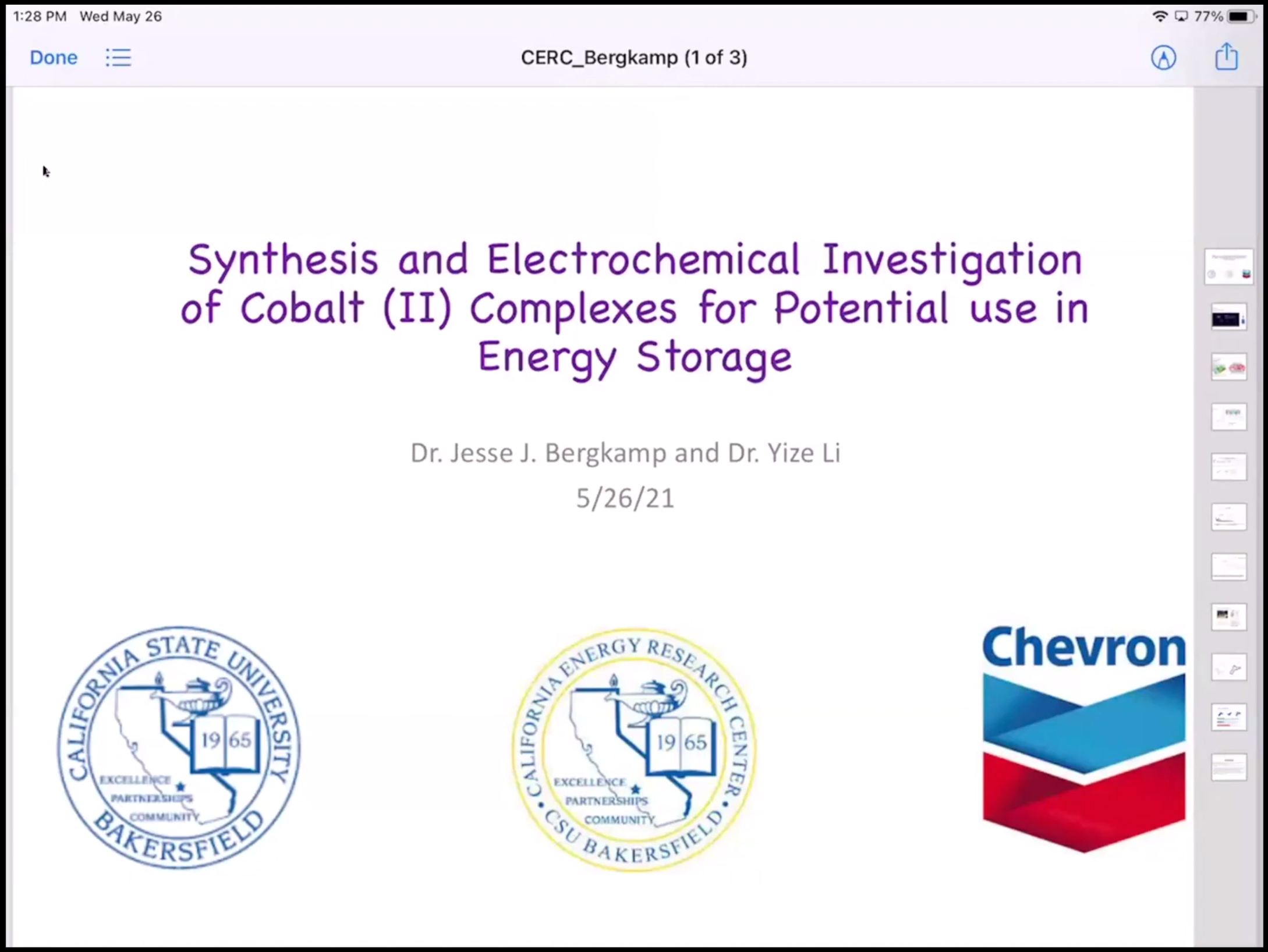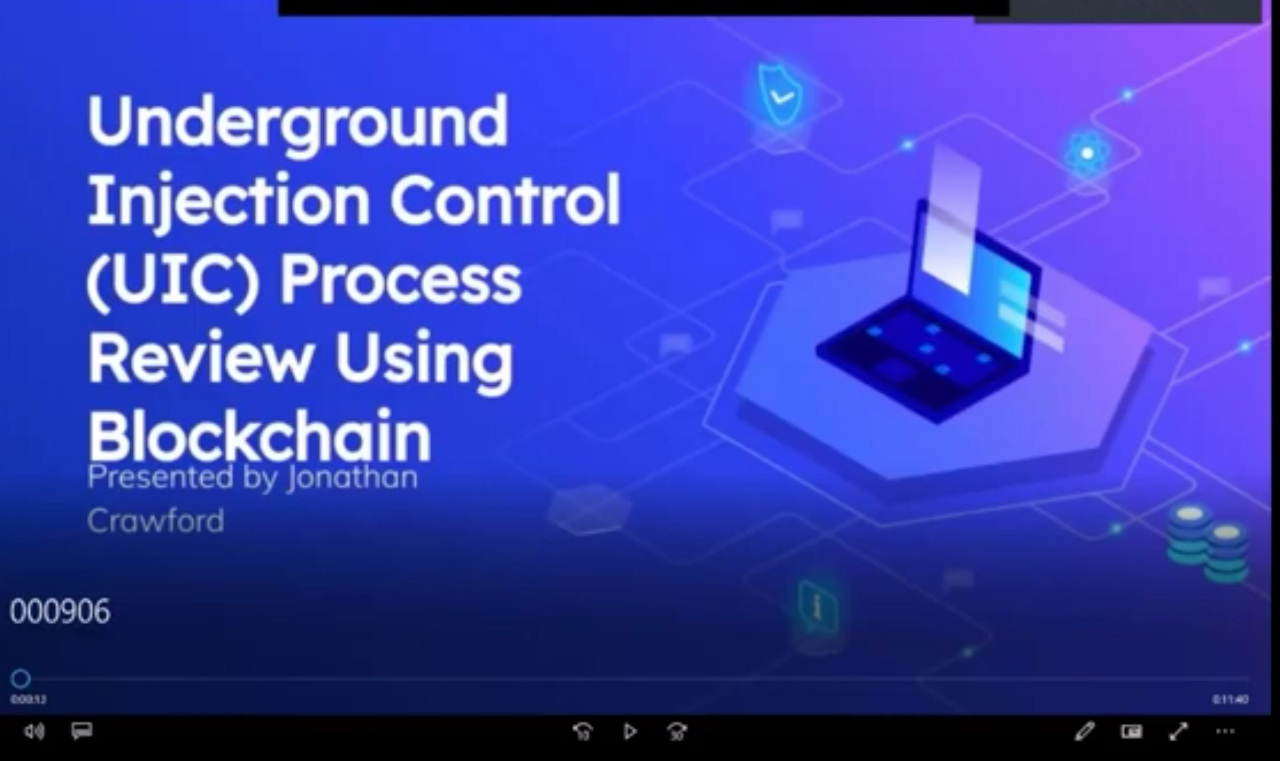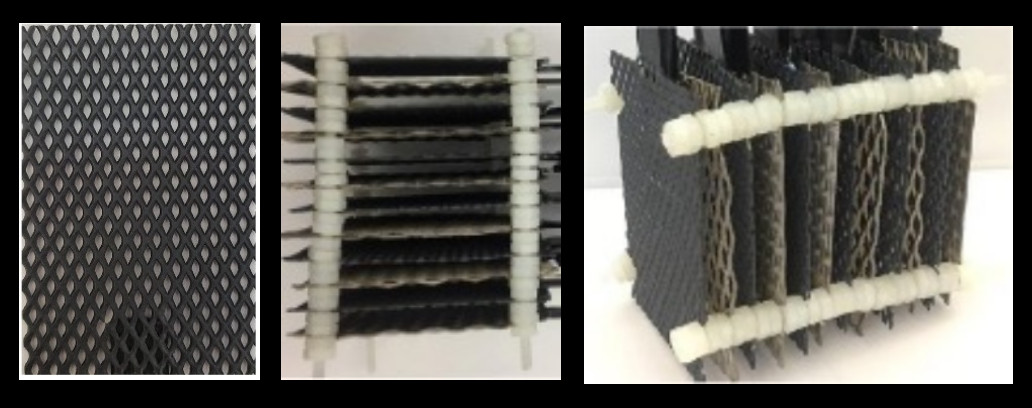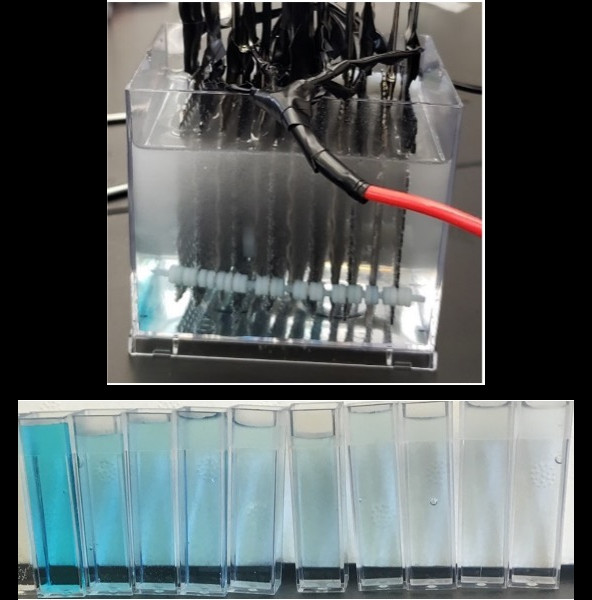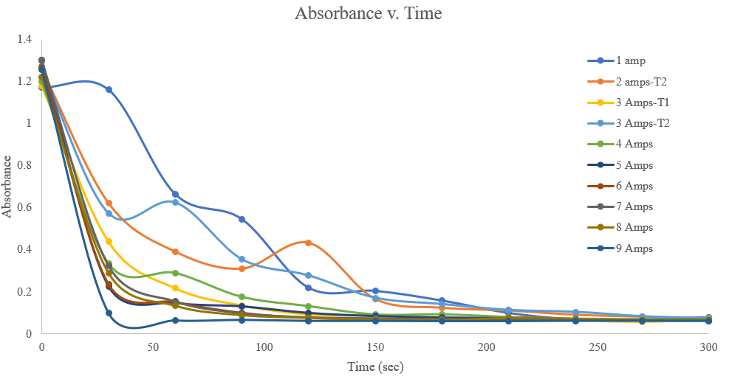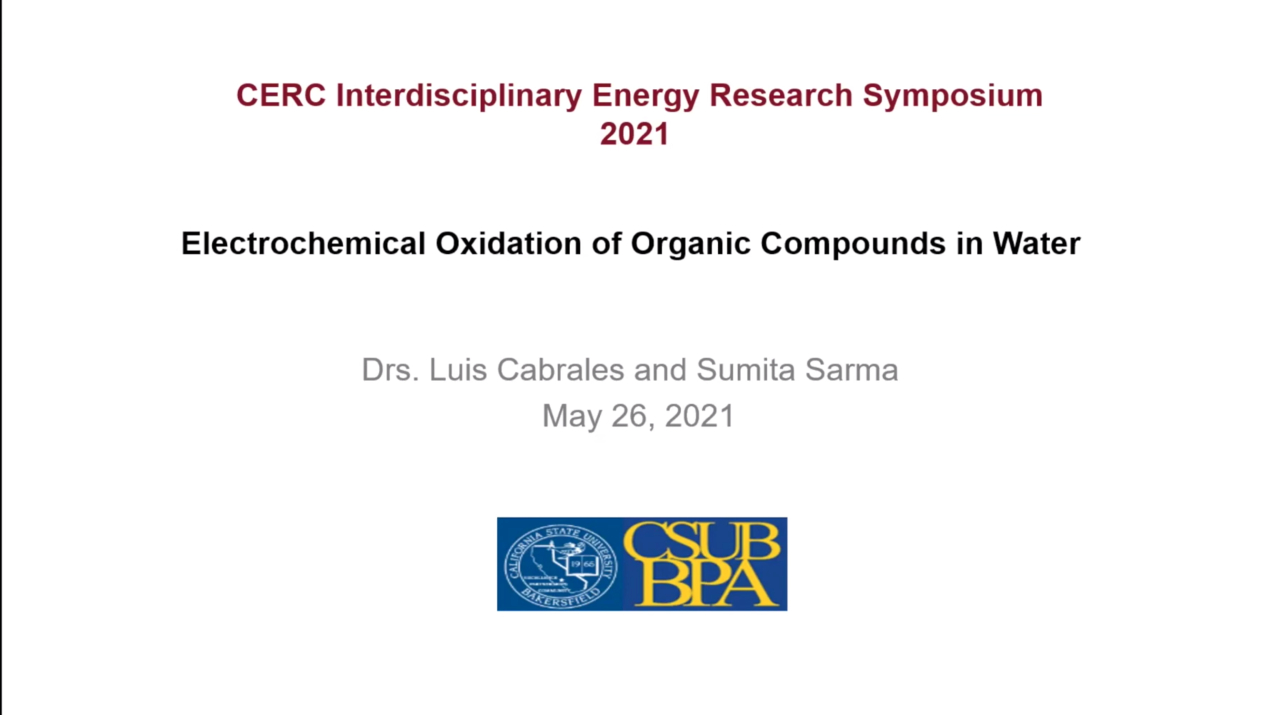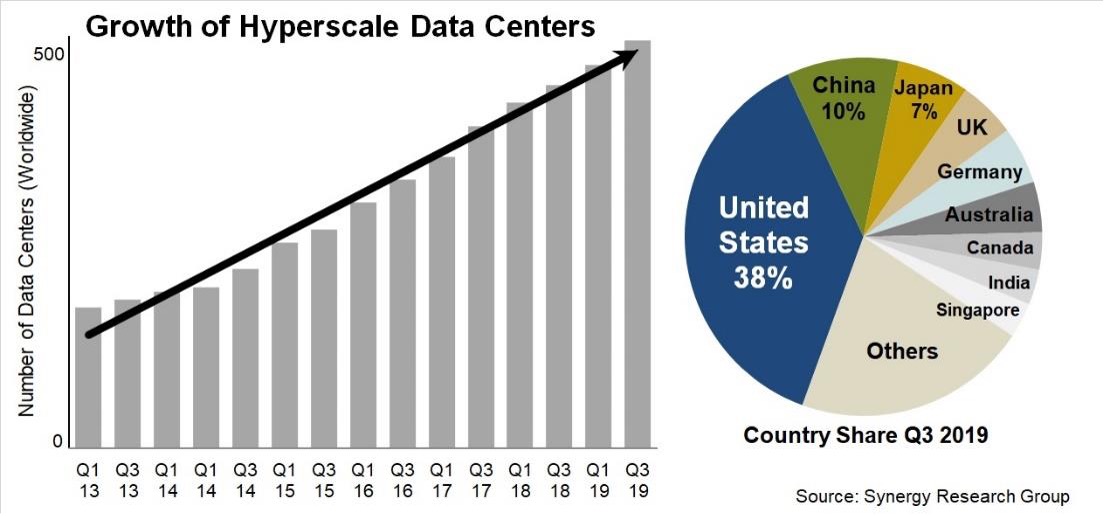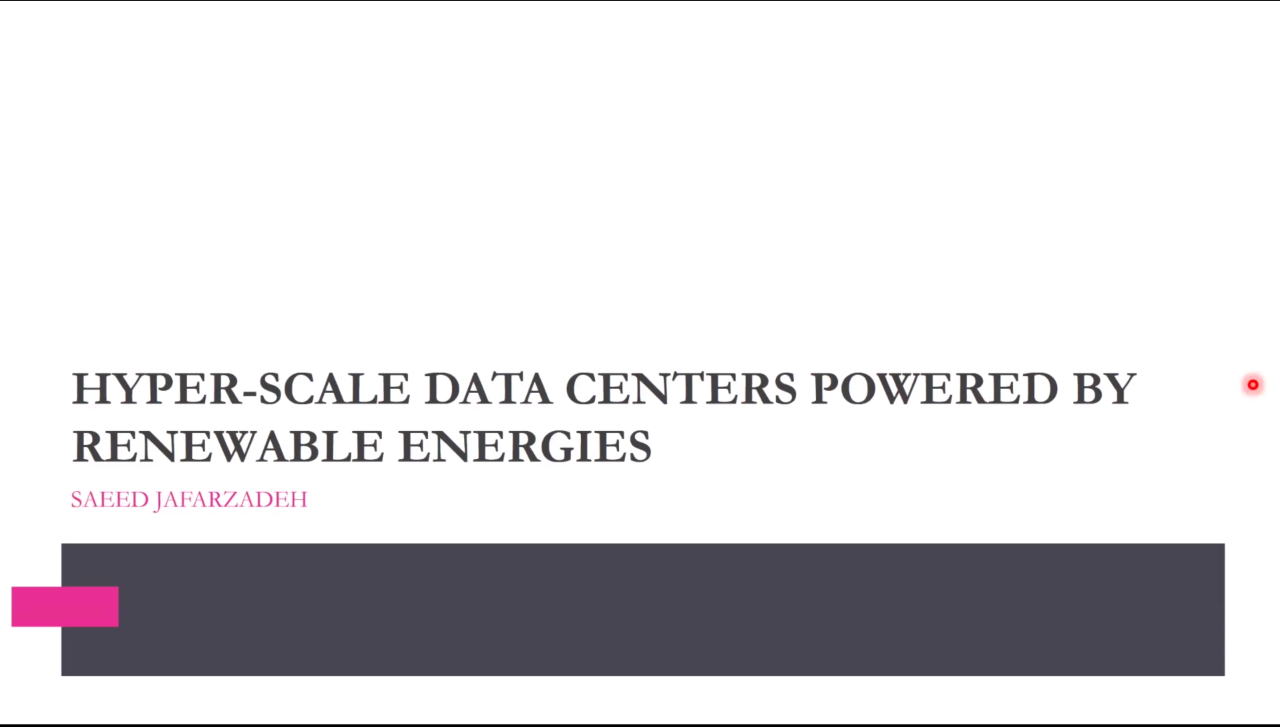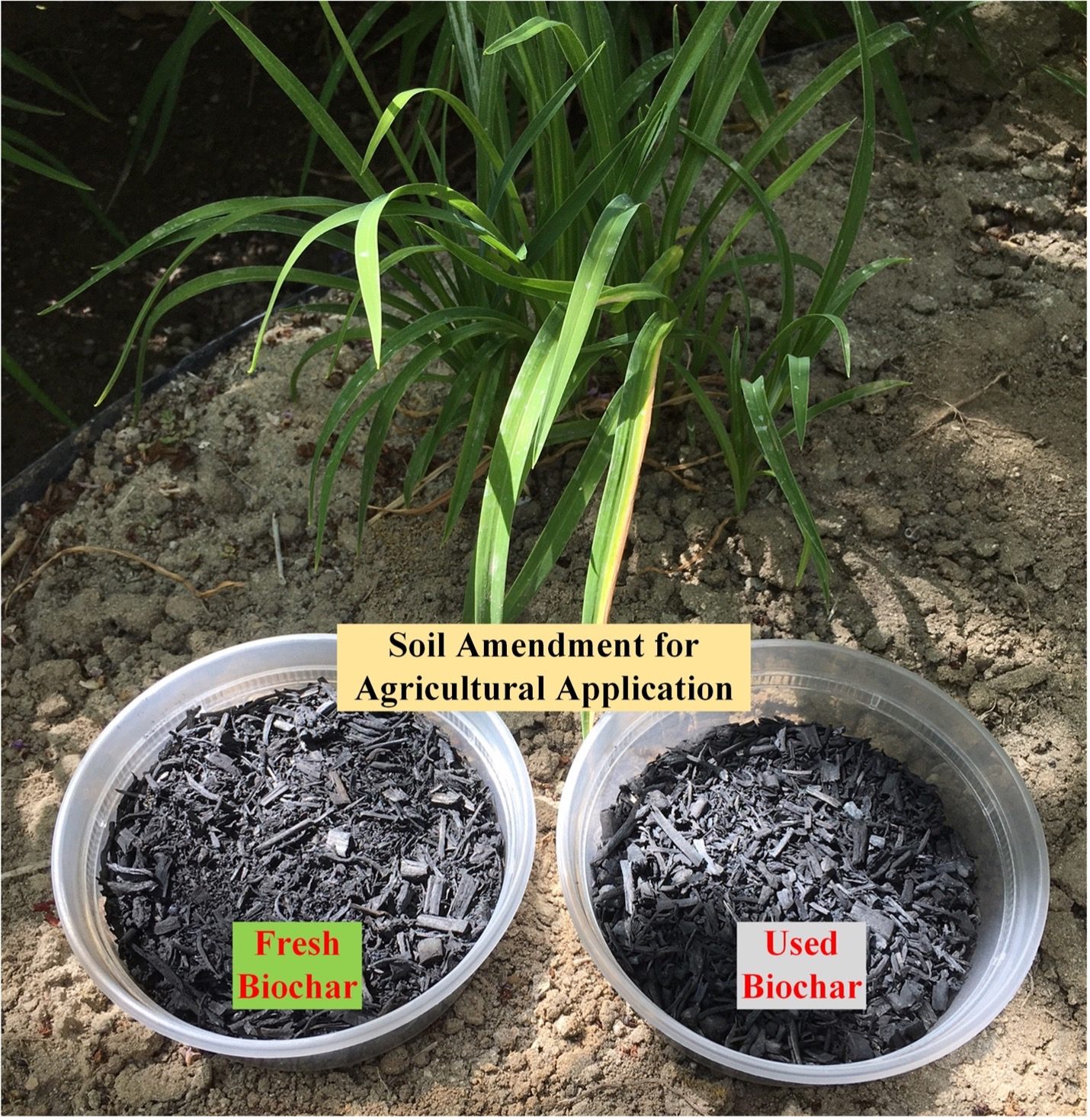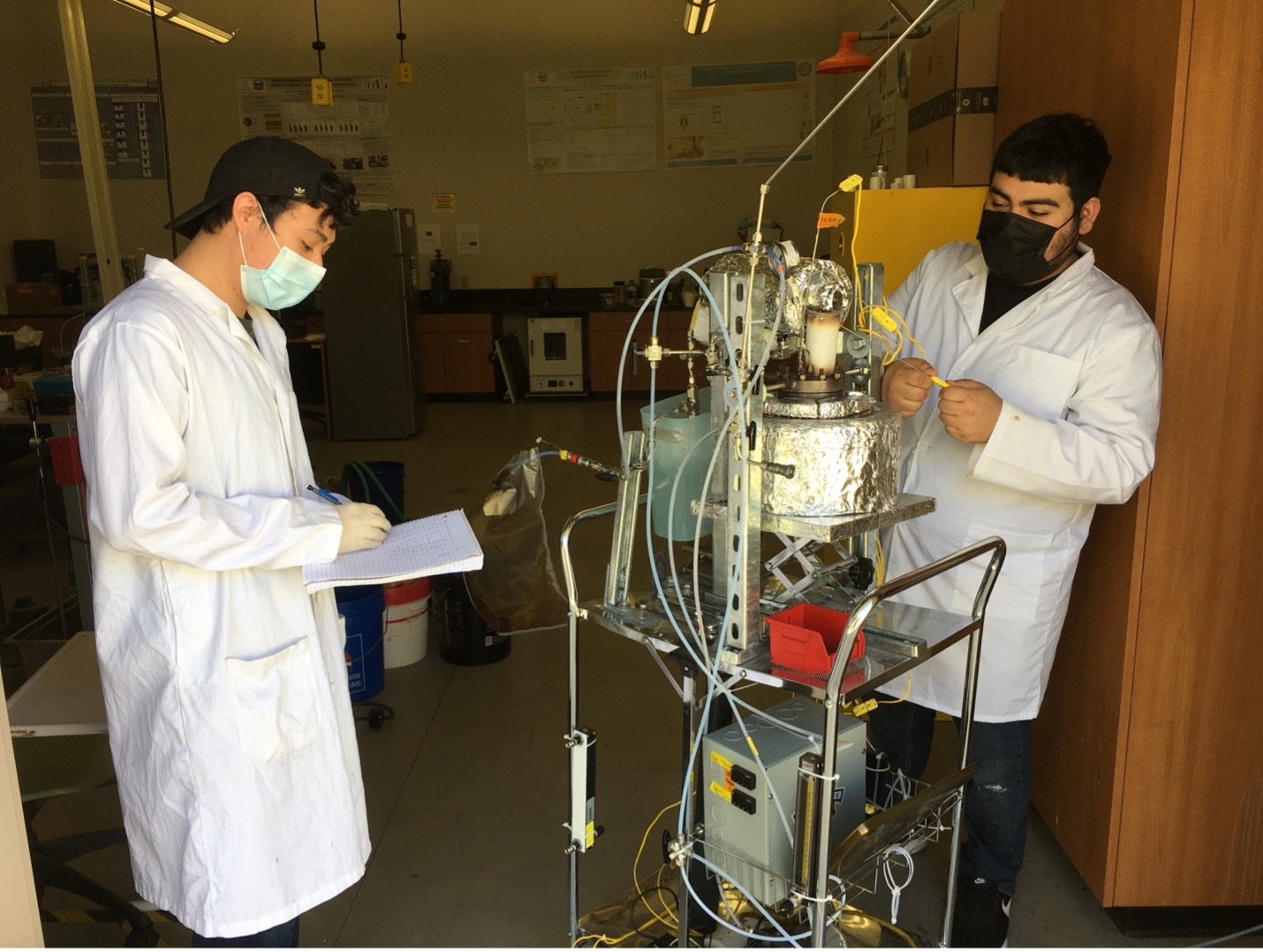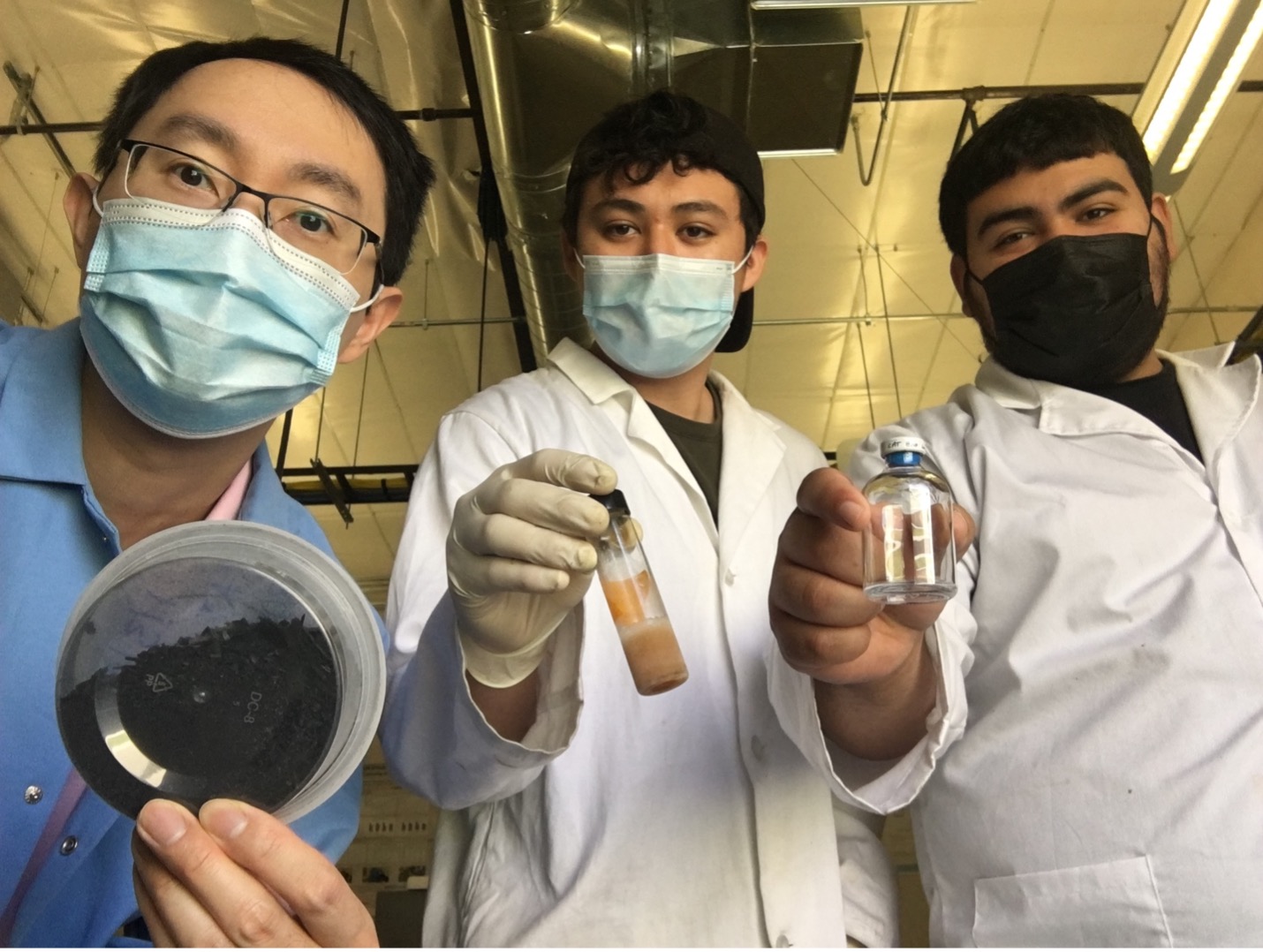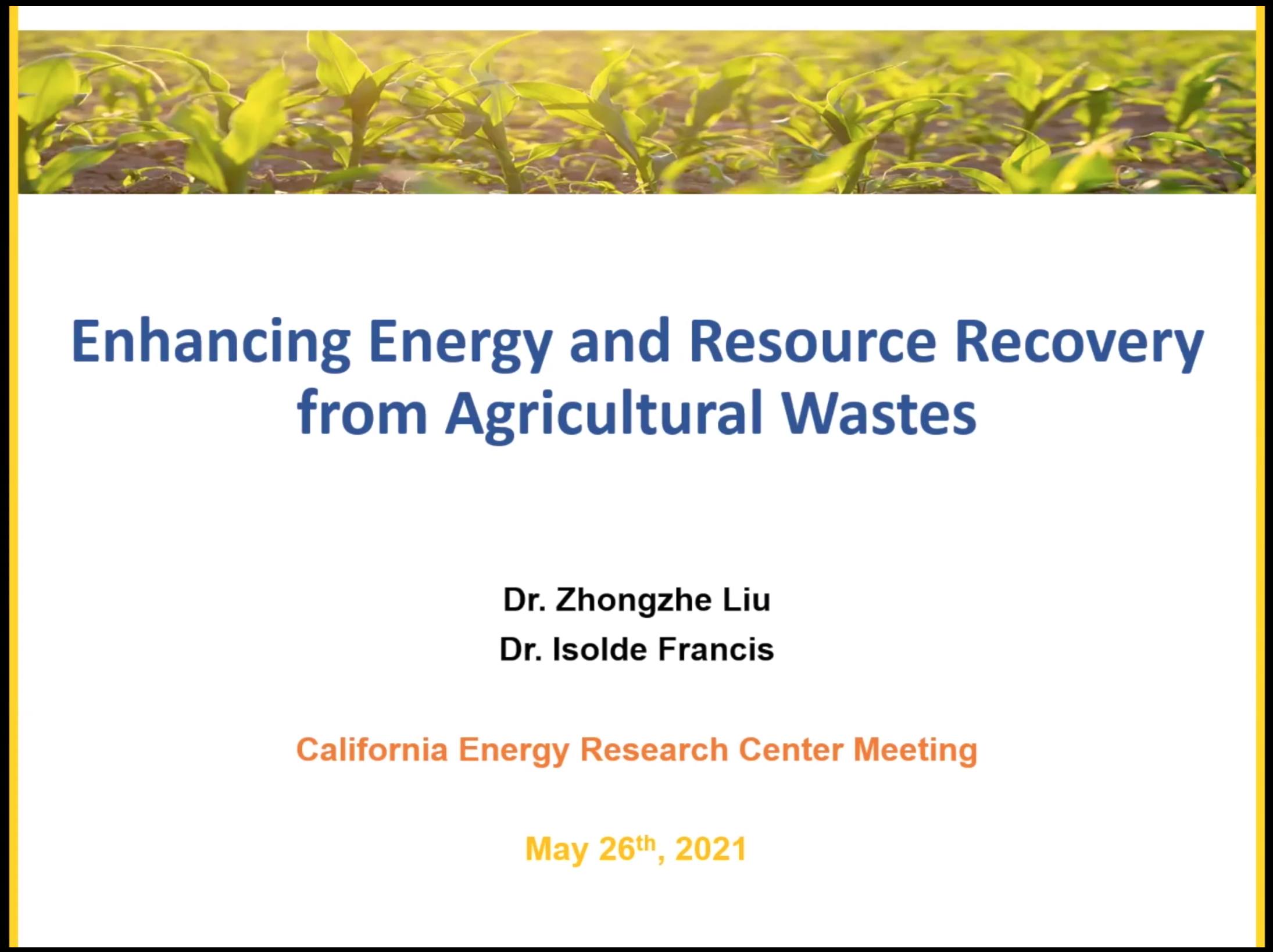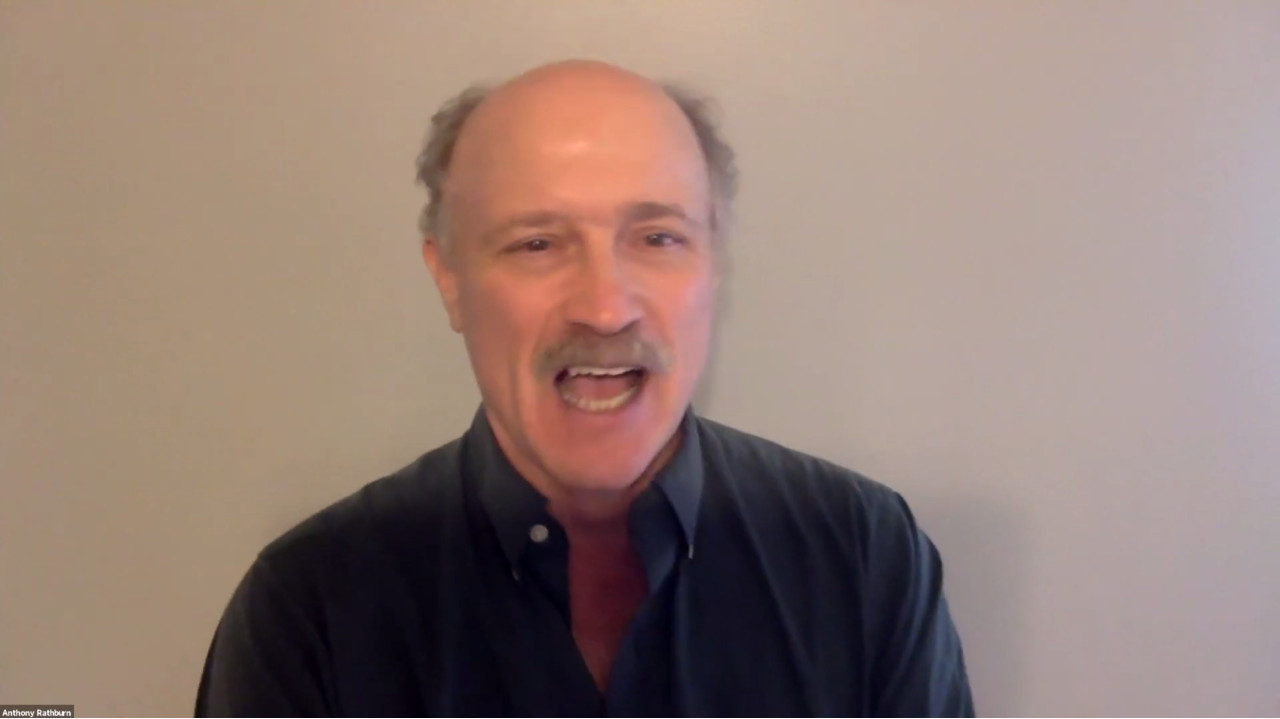CERC Interdisciplinary Energy Research Symposium
The California Energy Research Center's (CERC) first interdisciplinary energy research symposium was held virtually on May 26, 2021. If you missed it live, each presentation was recorded and can be watched on this page. Scroll down to see sections on each project, with abstracts, images and a video for each.
Through funding from Chevron, California Bioenergy and other research partners, CERC initiated an Interdisciplinary Energy Research Program to provide grants that promote interdisciplinary research teams, industry partnerships and student involvement in research. Funded research teams represent a wide range of disciplines and research activities. These interdisciplinary research projects bring together some of the best minds of CSUB faculty and students, and the community to conduct research on topics that have broad applications to issues relevant to the region and the world.
Find the program for this event.
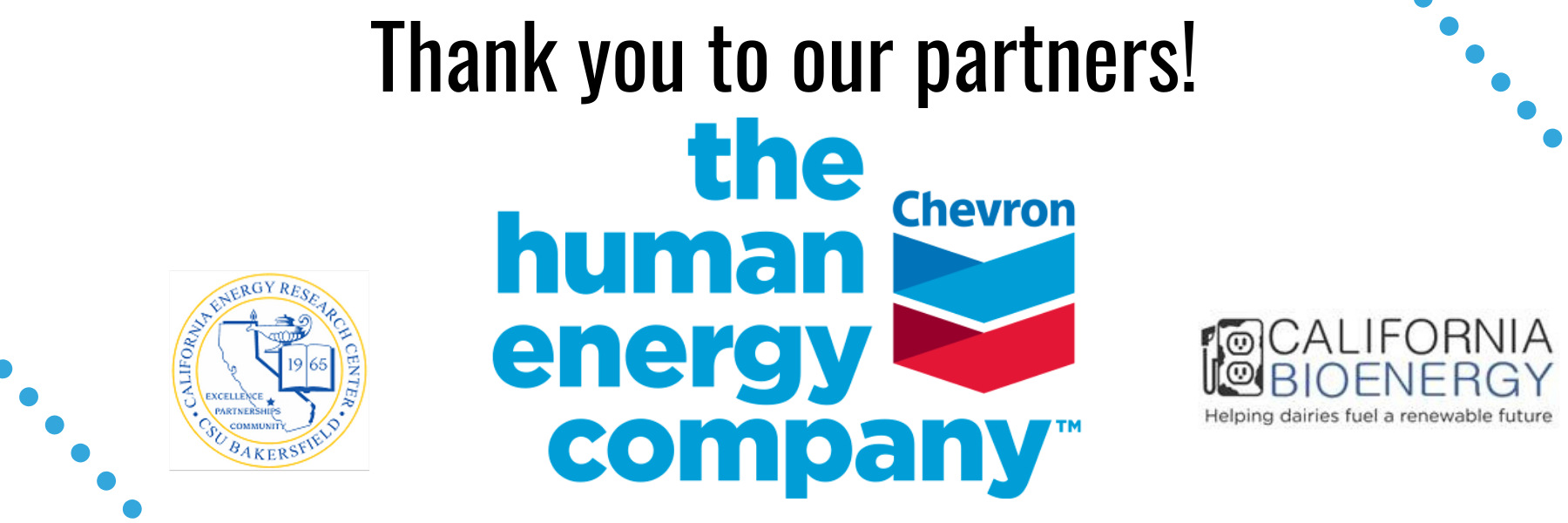
CERC-Funded Interdisciplinary Energy Research Program Projects
Below is a quick overview of six projects funded by CERC.
- “Pore-scale Modeling of Sandstones Using Computational Fluid Dynamics” led by Dr. Tathagata Acharya and Dr. Liaosha Song; This project focuses on the micro-scale properties of sandstone rock to enhance oil recovery from oil and gas reservoirs and to sequester carbon dioxide to help mitigate climate change.
- “Synthesis and Electrochemical Investigation of Cobalt (II) Complexes for Potential use in Energy Storage,” led by Dr. Jesse Bergkamp, Dr. Yize Li, and Dr. Swarnalatha Bomma; This project brings chemistry and biochemistry together with physics and deals with Redox Flow Batteries for electrical storage of energy generated from renewable energy sources such as solar energy.
- “Blockchain Database for Underground Aquifer Protection in Oilfields,” led by Dr. Chengwei Lei and Dr. John Yu; This project involves engineering, geological science, and computer science to study water contamination in Kern County, where both agriculture and petroleum generation are major industries. Results of this project will enhance public safety and improve the aquifer protection review process.
- “Electrochemical Oxidation of Organic Compounds in Water,” led by Dr. Luis Cabrales and Dr. Sumita Sarma; This project studies the use of produced water to irrigate crops, including the perception of using treated water for drinking or watering crops. The research also involves the water treatment itself, finding ways to clean wastewater from oil and gas production for reuse.
- “Hyper-Scale Data Centers Powered by Renewable Energies,” led by Dr. Saeed Jafarzadeh and Dr. Anthony Bianchi; This project is about the addition of renewable energy sources to large scale data centers whose powerful servers process and distribute information for everything from driving directions to financial trading. It specifically focuses on one benefit renewable energy sources provides: protection from power outages.
- “Enhancing Energy and Resource Recovery from Agricultural Wastes,” led by Dr. Zhongzhe Liu and Dr. Isolde Francis; The goal of this project is to develop a sustainable and environmentally friendly process for recovering energy and resources from agricultural wastes. The process produces raw fuel products and generates waste-derived soil amendment.
For full project abstracts, see below.
Dr. Tat Acharya and Dr. Liaosha Song
“Pore-scale Modeling of Sandstones Using Computational Fluid Dynamics” led by Dr. Tathagata Acharya, and Dr. Liaosha Song.
Evaluation of flow characteristics of CO2 in a sandstone core sample using Computational Fluid Dynamics (CFD)
Dr. Tat Acharya, Assistant Professor, Department of Physics and Engineering, tacharya@csub.edu
Dr. Liaosha Song, Assistant Professor, Department of Geological Sciences, lsong1@csub.edu
Greenhouse gas emissions, especially CO2, are an important contributor to climate change. While the world continues to attempt to reduce the production and emission of these greenhouse gases, it also needs to find storage space for CO2 that continues to be produced. Among many techniques currently applied, a process known as Carbon Capture and Sequestration (CCS) is a very promising one. Depleted sandstone oil reservoirs are ideal storage facilities for CCS operations as the nature of these reservoirs are massive and naturally sealing. Grain assemblage and pore structure are pivotal characteristics of a sandstone reservoir's porosity and permeability, properties that are important for both extraction of hydrocarbons as well as the injection of other fluids. In addition, CO2 flooding is a proven means of Enhanced Oil Recovery (EOR) that increases the percentage of recoverable original oil in place (OOIP) by mixing with otherwise immiscible and trapped oil to form a homogenous mixture which is pushed towards producing wells by ongoing flooding of CO2 and water. Large amounts of CO2 can then remain trapped in oil reservoirs for permanent storage.
For this project, 10 core samples taken from Round Mountain #1 Well will be analyzed using microCT to determine grain assemblage, pore structure, grain size distribution, and macro and micropore space connectivity, allowing for an examination of connectivity throughout the formation and its viability as long-term CO2 storage. In addition, X-Ray Diffraction (XRD) analyses will be performed to more accurately determine mineralogy of the sampled reservoir and allow for a better overall understanding of the reservoir rock. The measurements will then be used for the computational fluid dynamics (CFD) analysis to study CO2 flow characteristics and injectability through a porous sandstone rock. The key results shall include the transient carbon dioxide concentration profile, the pressure profile, and the velocity profile and varying boundary conditions.
Click on an image below to expand it.
Dr. Jesse Bergkamp and Dr. Yize Li
“Synthesis and Electrochemical Investigation of Cobalt (II) Complexes for Potential use in Energy Storage,” led by Dr. Jesse Bergkamp, and Dr. Yize Li.
This project brings chemistry and biochemistry together with physics and deals with Redox Flow Batteries for electrical storage of energy generated from renewable energy sources such as solar energy.
Dr. Jesse Bergkamp, Assistant Professor, Department of Chemistry & Biochemistry, jbergkamp@csub.edu
Dr. Yize Li, Assistant Professor, Department of Physics & Engineering, yli11@csub.edu
This project is a joint effort between the Chemistry & Biochemistry department (Dr. Jesse Bergkamp) and the Physics & Engineering department (Dr. Yize Li) here at CSUB. Undergraduate students conduct most of the hands-on experimental aspects of the project and are involved with data interpretation. The big picture application of this research deals with Redox Flow Batteries (RFBs) for electrical storage of energy generated from renewable energy sources such as solar energy. Our team has successfully synthesized a variety of cobalt complexes and quinones bearing different chemical groups to adjust how positive or negative they are (Dr. Bergkamp's research lab). The synthesized molecules have been characterized using Ultraviolet-visible, Infrared, and Nuclear Magnetic Resonance spectroscopy. To quantify their electrical potentials, we have carried out cyclic voltammetry (CV) measurements on a few of these compounds using a three-electrode system with a CHI600E electrochemical analyzer (Dr. Li's research lab). Preliminary CV experiments on Co(dMeO)2(bPy)ClO4, Co(dMeO)2(bPy)3Cl2, and Anthraquinone PEG have proved the experimental setup is operational but still needs to be optimized.
Dr. Chengwei Lei and Dr. John Yu
“Blockchain Database for Underground Aquifer Protection in Oilfields,” led by Dr. Chengwei Lei and Dr. John Yu.
Underground Injection Control (UIC) Process Review Using Blockchain
Presented by Jonathan Crawford (student)
Chengwei Lei, Assistant Professor, Department of Computer & Electrical Engineering/Computer Science, clei@csub.edu
John P. Yu, Affiliate Scientist & lecturer, Department of Geological Sciences, jyu2@csub.edu
This research project has successfully built a Distributed Ledger Technology (DLT) based prototype using R3 Corda open source. Its purpose applies in the oil & gas underground injection control (UIC) operations for the underground aquifer protection. This DLT prototype is a permissioned network that allows oil & gas companies to create, disseminate, and trace immutable records. The network enables oil and gas companies, government regulatory agencies, and all other participants to share secure documents such as well information while maintaining data integrity, traceability, and security. The purpose is to create a network of trust among all the stakeholders in the UIC processes for underground aquifer protection. In this DLT network, a company submits well information, which will be digitally signed and notarized. Unauthorized changes to the information, ownership, or history will become infeasible, thanks to the underlying cryptographic technologies of DLT. The network is designed so that information stored and communicated will have a high level of trustworthiness. Every participant in the network can get simultaneous access to a common view of the data. Corda platform also provides multiple functionalities, e.g., Smart contract, Vault, Identity Management, Scheduler, Notary Services, etc. Many of the functionalities automate the data processing within the DLT databases. This project's results are expected to enhance public safety and improve the aquifer protection review and operational processes. Kern County is uniquely poised for a project to develop more streamlined, effective, and entirely digitized DLT-based workflows that will secure regional environmental data integrity. Water contamination is a primary concern in a region where water and petroleum play vital roles in the economy. Both industries and regulatory agencies pay close attention to environmental quality. Data integrity is a primary issue of concern for those that monitor and analyze environmental data. Monitoring and forecasting based on available immutable data are imperative to mitigate complications. We have changed the manual workflow into DLT applications, which takes advantage of built-in functionalities. The new review process can avoid repetitive reviews among all participants and shorten approval time. The embedded smart contracts on the DLT network will also help automate the workflows, and therefore, will be able to help eliminate human errors and improve the turnaround time. The prototype model proves the concept of using DLT.
Takeaway statement:
Our research work demonstrates DLT can be successfully implemented into energy technology. The prototype model will further expand to all UIC processes, such as thermal, wastewater disposal, waterflood, gas injection & disposal, etc. It will be a substantial cost and time savings for oil and gas companies. The results of this analysis could provide the government with valuable information for significant policy and regulation decisions to further benefit the community and society.
Dr. Luis Cabrales and Dr. Sumita Sarma
“Electrochemical Oxidation of Organic Compounds in Water,” led by Dr. Luis Cabrales and Dr. Sumita Sarma
Electrochemical oxidation of organic compounds in water
Luis E. Cabrales, Associate Professor and Chair, Department of Physics and Engineering, lcabrales@csub.edu
In this project, an electrochemical multicell mesh reactor was designed, build, and tested in order to improve the efficiency of electroxidation technology. Due to the configuration of the multicell mesh, a high mass transfer is achieved within the system. The multicell electrochemical reactor was used to produce reactive species, such as chlorinated and peroxyl radicals. These reactive species oxidize any dissolved oil, or any hydrocarbon molecule in the reactor. The oxidation process converts hydrocarbon molecules in carbon dioxide. This process also has the capability of disinfecting and killing microorganisms present in the water. The results showed a good efficiency, which was tested by removing a blue dye and removing oil from produced water. The high surface area of the electrode configuration showed excellent results against a blue dye. Different amperages were used in electrooxidizing the dye molecules. By doing this test, we can measure the efficiency of the settings of the reactor. The reactor was filled with produced water and the oil in the water was measured by COD (chemical oxygen demand). The reactor was capable of removing the oil from the produced water sample to undetectable levels by COD.
Click on an image below to expand it.
Dr. Sumita Sarma, Assistant Professor of Management, Director, BREC, College of BPA, ssarma@csub.edu
Abstract 2
Oilfield produced water (OPW) will require multiple steps of treatment to make it suitable for agricultural use. Lack of interest or fear in reclaimed water use has discouraged treatment technologies from being implemented widely in the USA so far. This underlies the importance of commercialization of the current technologies under development. Semi structured interviews with major stakeholders in the OPW ecosystem – O&G managers/ business owners, ag industry experts/farmers, entrepreneurs, water district managers and water board personnel, environmentalist and academics – revealed several factors adversely affecting OPW reuse. Some of these are high cost of water treatment, lack of one stop shop for treatment technologies for these complex brines with oil, heavy metals and other contaminants, lack of funding in infrastructure, lack of commercial interest in water management owing to ethical reasons and open market structure, no known penalty and ease of disposal by returning OPW to ground, unknown effects of reclaimed OPW water constituents on agriculture and human health, and the lack of tight collaboration (such as public-private partnerships ) among the various stakeholder groups in this ecosystem. A public opinion survey revealed that OPW is favored more than other reclaimed waters such as black and industrial waters for irrigation. With projected megadrought in California in the coming years, this maybe the right time to incentivize reclamation of oilfield produced water (OPW) on a large scale.
Dr. Saeed Jafarzadeh and Dr. Anthony Bianchi
“Hyper-Scale Data Centers Powered by Renewable Energies,” led by Dr. Saeed Jafarzadeh and Dr. Anthony Bianchi.
Hyper-Scale Data Centers Powered by Renewable Energies
Saeed Jafarzadeh, Associate Professor, Department of Computer and Electrical Engineering and Computer Science, sjafarzadeh@csub.edu
Anthony Bianchi, Assistant Professor, Department of Computer and Electrical Engineering and Computer Science, abianchi@cs.csubak.edu
With significant global growth and high concentration in the United States of America, hyper-scale data centers have become one of the largest consumers of electric energy (Figure 1). As a result, large technology corporations, motivated by long term energy savings and resultant carbon credits, have rushed to incorporate renewable resources for their energy supply (Figure 2). However, despite the benefits of renewable energy resources their intermittent nature endangers the sustainability of energy supply for these data centers. This research project studies the operation of hyper-scale data centers to offer solutions that in effect hedge these data centers against power interruptions caused by renewable resources. The main outcome of this research project is reconsidering data centers as micro-grids. The main motivation is to sustain data center operation given harsh contingencies imposed on both the electric grid and renewable resources. The scientific outcomes of the project include a technical conference paper co-authored by an undergraduate student researcher, a presentation at the CSUB research symposium, and a research proposal seeking NSF funding for further research studies on this subject.
Click on an image below to expand it.
Dr. Zhongzhe Liu and Dr. Isolde Francis
“Enhancing Energy and Resource Recovery from Agricultural Wastes,” led by Dr. Zhongzhe Liu and Dr. Isolde Francis
Enhancing Energy and Resource Recovery from Agricultural Wastes
Dr. Zhongzhe Liu, Assistant Professor, Department of Physics and Engineering, zliu3@csub.edu
Dr. Isolde Francis, Assistant Professor, Department of Biology, ifrancis@csub.edu
Sustainable and environment-friendly methods for handling agricultural wastes are highly demanded in agriculture-based areas. The project developed a new catalytic pyrolysis process to enhance the overall energy and resource recovery from agricultural wastes. This new process generated four products, which were fresh biochar, used biochar, pyrolysis gas, and catalyzed pyrolysis condensate. The fresh biochar was used as the catalyst in this process and became used biochar after catalysis. Different agricultural wastes were tested using this process such as corn stover, grape pruning, and wheat straw. Agricultural-waste-derived biochar was found catalytic to decompose hydrocarbons in the pyrolysis vapor (pyrolysis gas and condensate) that was produced from agricultural wastes themselves. The enhanced pyrolysis gas yield generated more energy in this process. Moreover, the fresh biochar and used biochar (catalyst) products were evaluated as a soil amendment for agricultural application. Assays with the biochar products are currently ongoing to study their beneficial properties on plant growth.
Click on an image below to expand it.
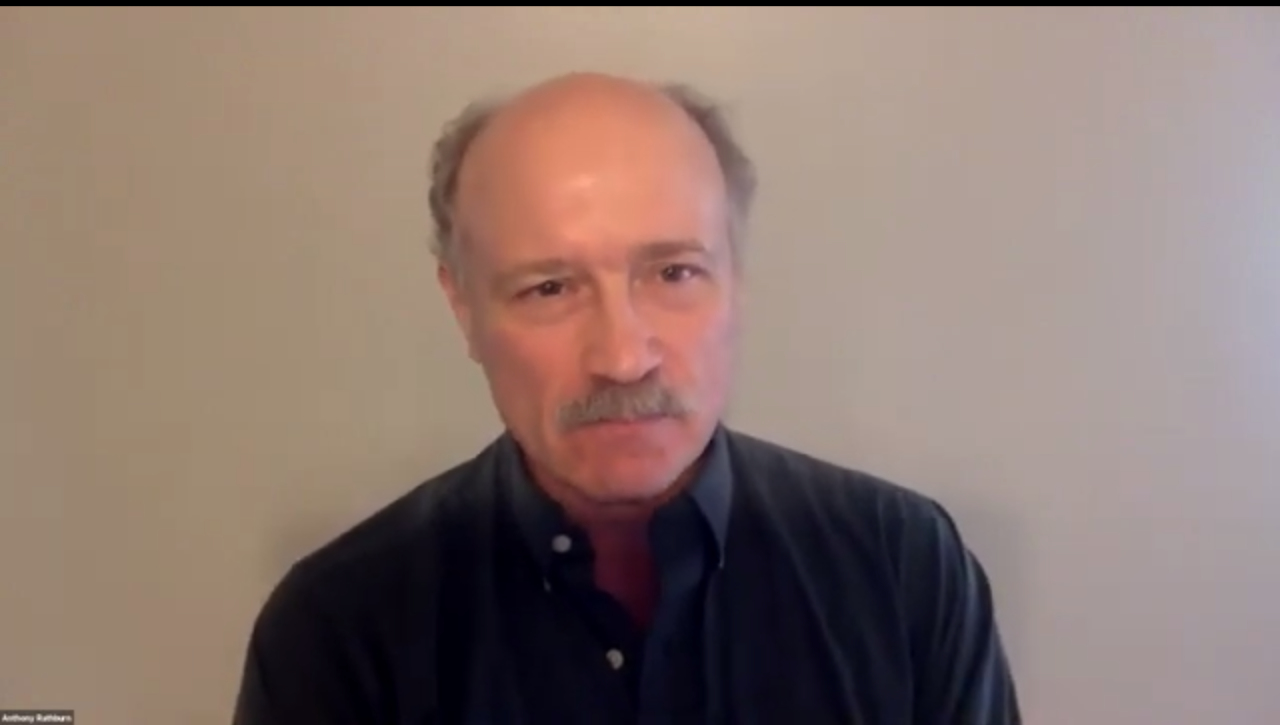
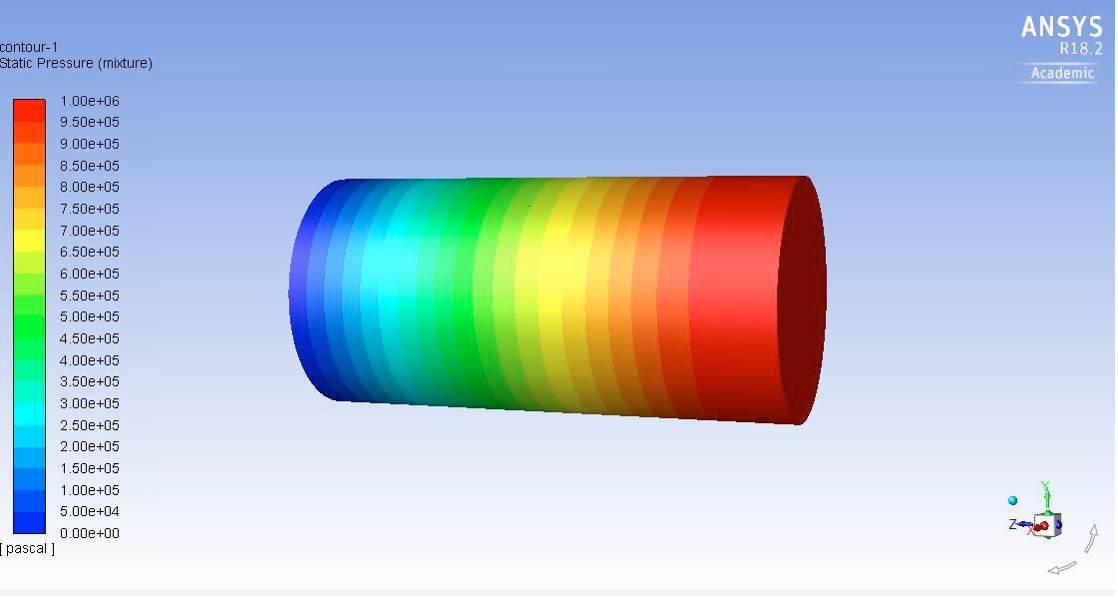
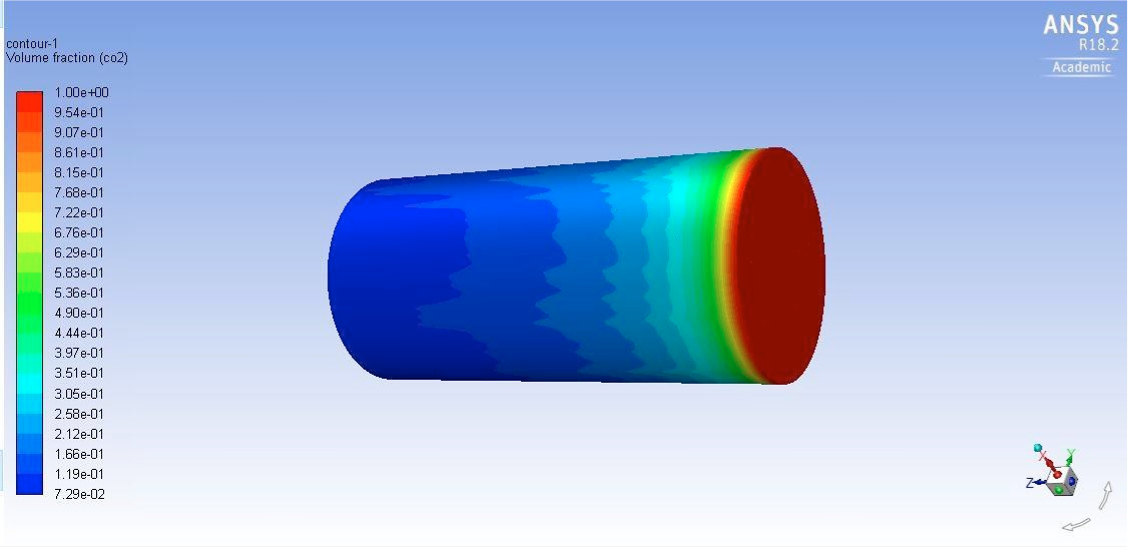
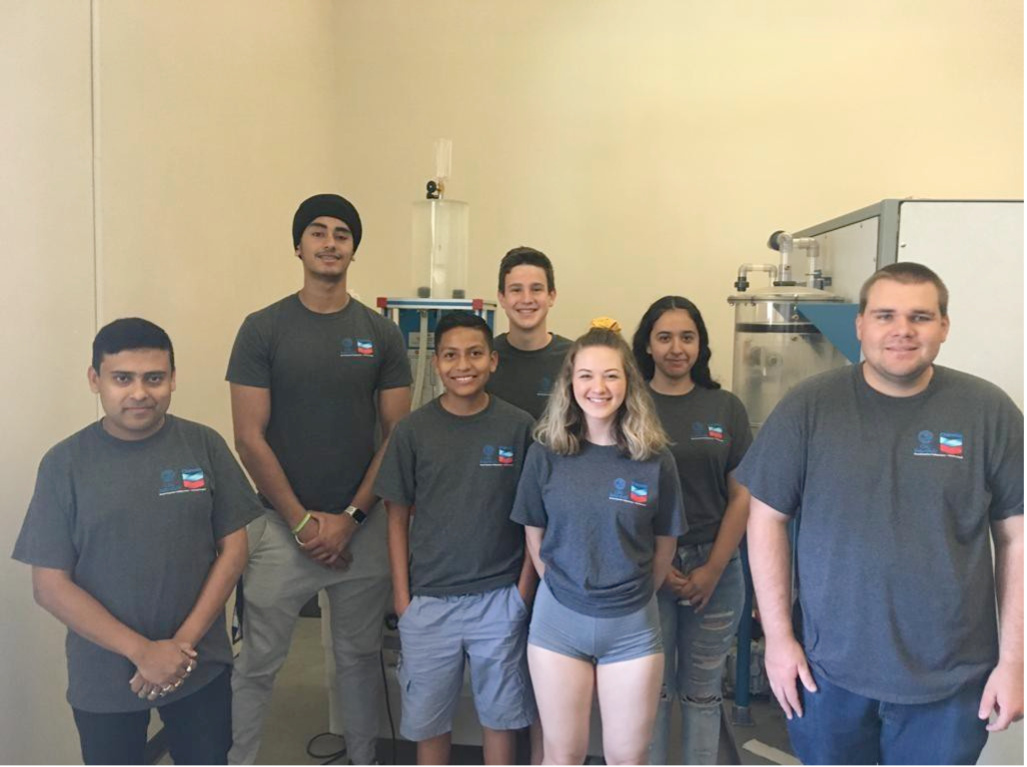
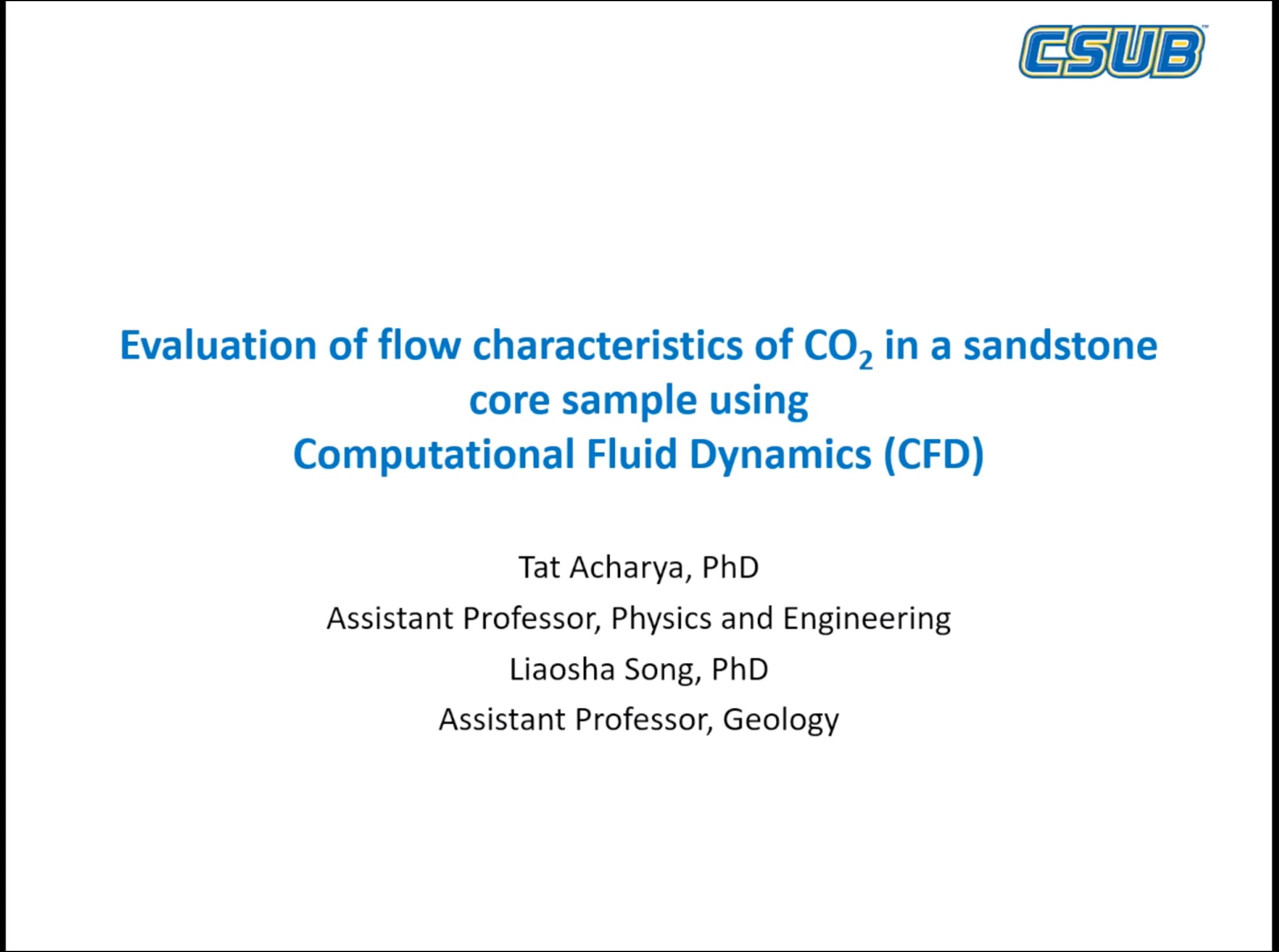
![Scheme 1. Reaction conditions and reagents needed to synthesis the novel compound 1,2,3,6,7,8-hexa(2-[2-(2-hydroxy]ethoxy)anthracene-9,10-dione.](/cerc/_images/Bergkamp%201_0.jpg)

